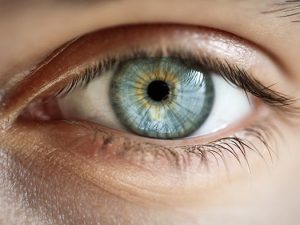What affects basal temperature
Some items can interfere with basal temperature and therefore must be taken into account. Are these:
Some women suffer from hormonal imbalances and fever for different reasons; this contraceptive method is not reliable for these women.
The temperature measurement is unreliable if you have the flu or have taken alcohol or drugs the night before.
If your body sleeps less than three hours or if you have been using medications that interfere with appetite.
If you use a different thermometer mid-cycle or if you use an electric blanket
If, in the period of taking the basal temperature, there is a lot of emotion at the mental and emotional level, these emotions negatively interfere with the relief of the temperature.High basal temperature
Constant basal temperature is also among the symptoms of an ongoing pregnancy. Suppose the increase in basal temperature (value close to 37 ° C) continues from the second half of the cycle until beyond the concurrent period of missed menstruation. In that case, it is a very sure sign of conception, and it only works if the temperature is controlled from the beginning of the cycle. Otherwise, it cannot go up.
Low basal temperature
What does it mean if the basal temperature is always low? Given that progesterone is the main responsible for the increase in temperature, it is conceivable that a consistently low value is a symptom of the absence of ovulation or, in any case, of poor ovulation.
Basal temperature anovulatory cycle
So how to understand if ovulation has occurred by measuring basal temperature? If the cycle is ovulatory, the temperature will probably have a biphasic trend (it will be lower in the days before ovulation and will increase after ovulation, maintaining values higher than all the values of the pre-ovulatory phase. In the case of cyclical anovulation, the temperature will remain more or less constant throughout the cycle, with irregular ups and downs.
The best thermometers to measure basal temperature
Once we know what it is and how to measure the temperature to know if we can get pregnant, it will be good also to know some of the best models currently on the market. Thermometers that, as we say, can be bought in pharmacies or stores like Amazon.
basal thermometer
This basal thermometer is an excellent alternative to ovulation sticks. It has a monitor to display the temperature and measures in just 90 seconds. It also offers a graph of basal body temperature that allows you to plot the ovulation curve.
Femtometer digital thermometer for basal temperature
basal thermometer
Femtometer is a basal thermometer that intelligently measures and analyzes your basal body temperature (BBT) to calculate your fertile period. It is accurate to ± 0.09 ℉, and thanks to state-of-the-art technology, the device measures slight changes in body temperature and translates them into interpretable data. It is straightforward to use: it turns on and off automatically by removing the cap and measures basal temperature in 90 seconds. It is connected to an application in which to save graphic notes and other helpful information.
When it comes to getting pregnant, it is vitally important to know our body well, since in this way it will be easier for us to achieve it. The calculation of fertile days is one of the ways to know your body better to calculate which days to get pregnant. But how can we know what our fertile days are? One of the recommended methods for this purpose is the calculation of the basal temperature.
Once you have managed to get pregnant, doubts will begin to arise about whether your baby will be born healthy or the main tests you should take, but until that moment, knowing more about the basal temperature may be the key.
What is the basal temperature in pregnancy?
The basal temperature is the temperature that your body presents when you wake up in the morning. After ovulation, a woman’s body temperature rises slightly between 0.2 and 0.5 degrees above her average temperature, a rise that is maintained for the next ten days until the start of the next menstrual cycle, when the temperature drops back to its original value. A very slight change that, however, can be the key to achieving that desired pregnancy.
The fertile days correspond to the four days before ovulation, the day of ovulation itself, and the day after it. With the basal temperature, you can approximate the day of ovulation, which is undoubtedly the most favorable day to achieve that pregnancy.
How to measure your basal temperature
To get the most accurate measurement of your basal temperature possible, it is essential to be disciplined and develop a routine when measuring your temperature.
For medTo go your basal temperature, you need maximum precision. It is best to use a mercury thermometer and always use the same one.
You should measure your basal temperature as soon as you wake up before getting out of bed. Therefore, it is recommended that you leave the thermometer ready the night before.
Try to take the temperature every day simultaneously and in the same part of the body, be it the mouth, armpit, or vagina.
Keep in mind that the temperature can vary with any alteration: if you are sick, if you have done a lot of exercises or if you have stayed up all night. You will have to take into account all these factors.The basal temperature curve
Once these issues are clarified, we will see how what is known as the basal temperature curve is calculated.
You have to start taking your temperature on the first day of the menstrual cycle, that is, the first day your menstruation goes down. You will need to take your temperature every day until your next cycle begins.
Write down the temperature every day on a piece of paper and make a graph, in which the days appear horizontally and the degrees vertically.
When you are sick or have undergone any change that could affect your basal temperature, write them down with abbreviations to identify them quickly.
When you are ovulating, you will see a slight increase in temperature, which gives way to the luteal phase and is the key sign that we have ovulated.
If you are pregnant, your temperature will undoubtedly rise, and it is most likely that, almost until the end of pregnancy, the basal temperature will not drop to its usual level.In this method, consistency is the key since a correct range of fertile days cannot be obtained if the results are not measured daily.






























Add Comment